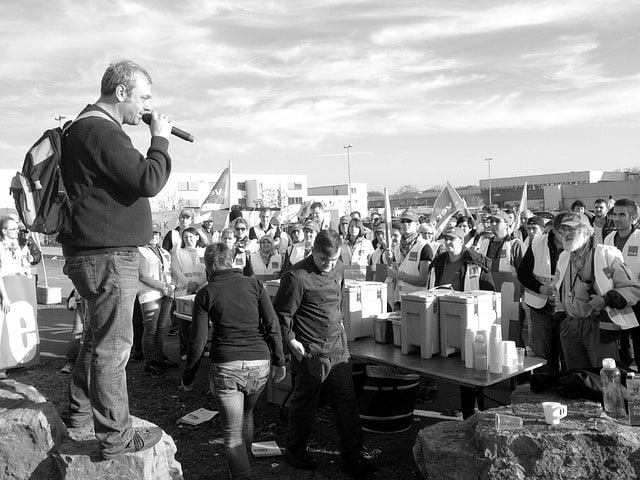
The labor movement seeks to improve the working conditions of workers.
Movement is a term that can be used in different ways. In this case, we are interested in its meaning as the development and dissemination of a current or tendency of thought.
Obrero , meanwhile, comes from operanius . The concept can refer to that which is linked to work or to that which works. In certain contexts, it specifically mentions the individual who performs work in the industrial field and receives a salary for his activity.
It can be said, in short, that the labor movement is the political and social activism that aims to improve the working and living conditions of workers . This movement is formed and strengthened from the union of the proletariat .
Labor movement concept
Before moving forward with the definition of the labor movement, it is important to consider that society is usually divided into classes for purposes of analysis or study. Social stratification can be carried out taking into account income level, property ownership, social status, professional rank or other criteria.
In this framework, the notion of the working class emerges. Although there are different views, the broadest conception indicates that it is made up of workers who sell their labor power in exchange for a salary .
While the bourgeois class owns the means of production, the working class lacks them. That is why she is forced to offer her work on the market . Marxism points out that the additional value ( surplus value ) that workers create with their activity is appropriated by the owners of capital .
Faced with this unequal relationship between the owners of the means of production and the proletariat, the labor movement seeks to protect the rights of workers and achieve achievements that mean progress for them.

When the demands of the labor movement are not heard, it is common for a strike to be declared.
Its origin
The origins of the labor movement date back to the first groups of artisans, weavers and other trades. In these associations , workers helped each other and tried to improve their situation.
Starting with the Industrial Revolution , there were guilds that organized to oppose the introduction of machines, since they considered that they harmed those who made a living from crafts. Meanwhile, workers in early industries began to congregate to provide mutual assistance and strengthen their position.
The authorities of the United Kingdom , cradle of the Industrial Revolution , soon repressed the nascent labor movement. The leaders were persecuted and thus began a confrontation that, to a greater or lesser extent, always remained between the governments and the organized workers.
The struggle of the labor movement
With industrialization , many workers were forced to work longer hours. Child labor also increased, for example. Faced with these and other abuses, the workers united to make their voices heard.
At a general level, it can be stated that the labor movement aims to achieve improvements in salaries and working conditions in general , also asking for coverage such as unemployment insurance and compensation . As a pressure mechanism when negotiations fail, unions and sector entities often carry out strikes and protests .
The State , in this context, acts as a mediator between employers and workers. In this way, it tries to guarantee social peace .
